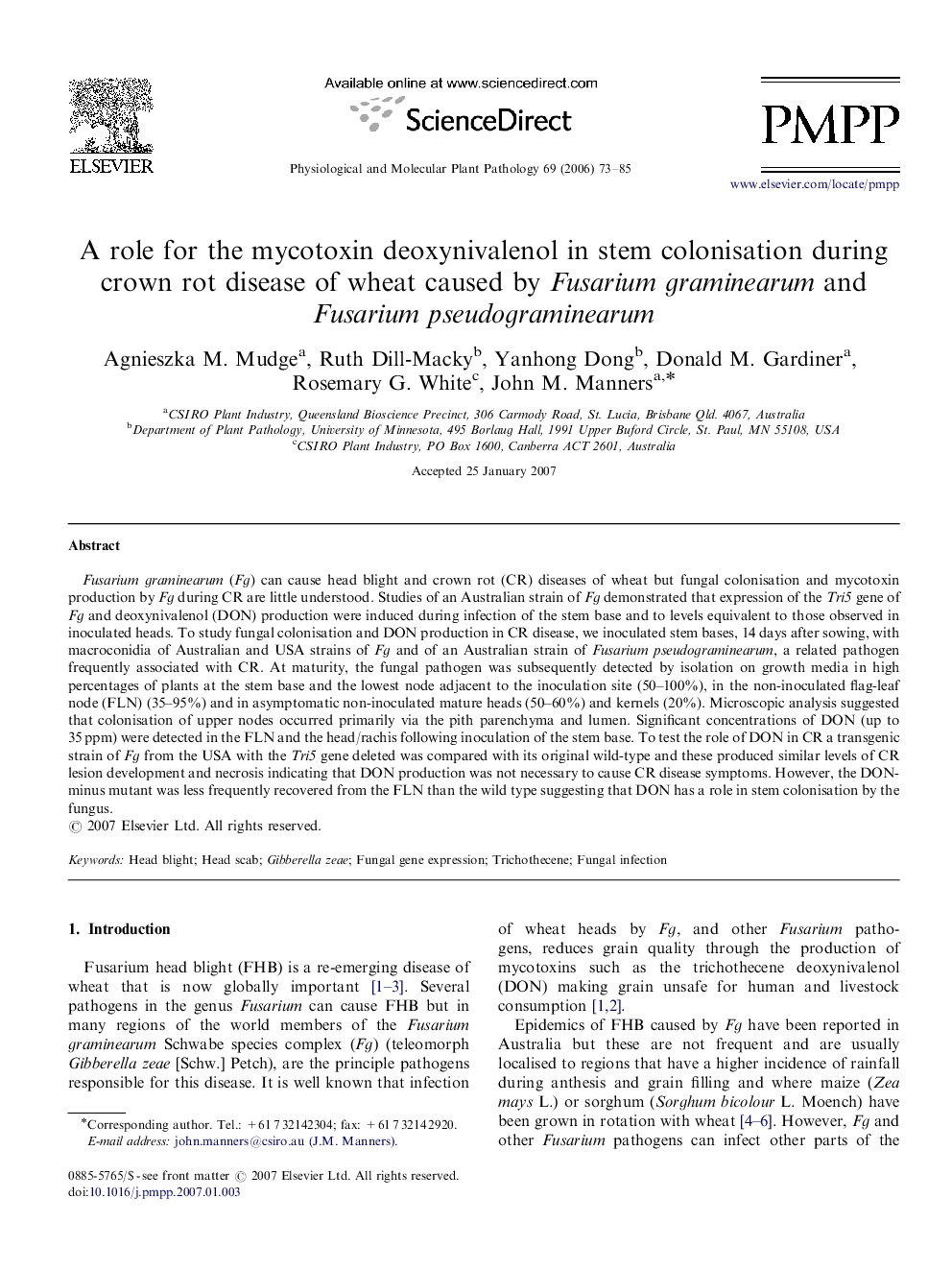| Article ID | Journal | Published Year | Pages | File Type |
|---|---|---|---|---|
| 2836798 | Physiological and Molecular Plant Pathology | 2006 | 13 Pages |
Fusarium graminearum (Fg) can cause head blight and crown rot (CR) diseases of wheat but fungal colonisation and mycotoxin production by Fg during CR are little understood. Studies of an Australian strain of Fg demonstrated that expression of the Tri5 gene of Fg and deoxynivalenol (DON) production were induced during infection of the stem base and to levels equivalent to those observed in inoculated heads. To study fungal colonisation and DON production in CR disease, we inoculated stem bases, 14 days after sowing, with macroconidia of Australian and USA strains of Fg and of an Australian strain of Fusarium pseudograminearum, a related pathogen frequently associated with CR. At maturity, the fungal pathogen was subsequently detected by isolation on growth media in high percentages of plants at the stem base and the lowest node adjacent to the inoculation site (50–100%), in the non-inoculated flag-leaf node (FLN) (35–95%) and in asymptomatic non-inoculated mature heads (50–60%) and kernels (20%). Microscopic analysis suggested that colonisation of upper nodes occurred primarily via the pith parenchyma and lumen. Significant concentrations of DON (up to 35 ppm) were detected in the FLN and the head/rachis following inoculation of the stem base. To test the role of DON in CR a transgenic strain of Fg from the USA with the Tri5 gene deleted was compared with its original wild-type and these produced similar levels of CR lesion development and necrosis indicating that DON production was not necessary to cause CR disease symptoms. However, the DON-minus mutant was less frequently recovered from the FLN than the wild type suggesting that DON has a role in stem colonisation by the fungus.
